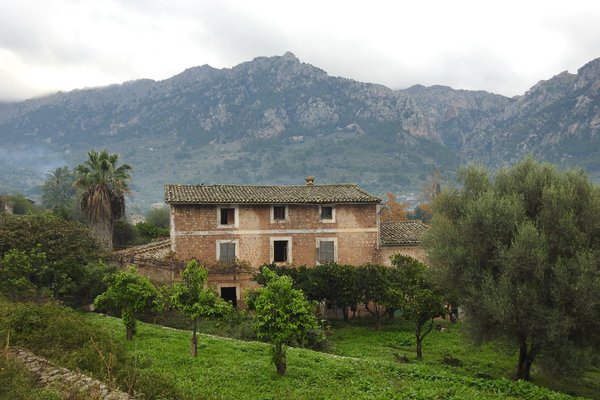Spain
Serra de Tramuntana
The Cultural Landscape of the Serra de Tramuntana is a man-made agricultural landscape on a mountain range on Mallorca.
Olives, grapes, and oranges were and still are grown on the farms. The land has been made productive by the construction of agricultural terraces and irrigation canals in the Arabic tradition. In addition, towns, villages, churches, and chapels were founded.
Community Perspective: The Serra de Tramuntana is mostly worth a visit because of its sometimes stunning landscape. Solivagant wonders however where its "cultural landscape" status has come from, while Els tries to distinguish what's in the core zone and what isn't.
Site Info
Official Information
- Full Name
- Cultural Landscape of the Serra de Tramuntana (ID: 1371)
- Country
- Spain
- Status
-
Inscribed 2011
Site history
History of Serra de Tramuntana
- 2011: Revision
- Includes part of former TWHS Las Torres de defensa, Baleares (1998)
- 2011: Advisory Body overruled
- ICOMOS recommended deferral. OUV (Crit ii, iv, v and vi) not demonstrated and needed more work. Also needed better comparative analysis and management. Jor led case for inscription on original criteria, Aus, Sui opposed. Egy wanted referral and Mex opposed only Crit vi. Site was inscribed on that basis.
- 2011: Inscribed
- Inscribed
- Type
- Cultural
- Criteria
- ii
- iv
- v
Links
- UNESCO
- whc.unesco.org
- Official
-
- serradetramuntana.net — Serra de Tramuntana
All Links
UNESCO.org
- whc.unesco.org — whc.unesco.org/
Official Website
- serradetramuntana.net — Serra de Tramuntana
News Article
- July 29, 2013 hispanicallyspeakingnews.com — Fire on Mallorca Has Destroyed 4500 Acres of WHS
Community Information
- Community Category
- Cultural Landscape: Continuing
Travel Information
Recent Connections
-
Located in a TCC Territory
Balearic Islands -
Olive Tree Landscapes
"Olive cultivation spread throughout th… -
Named after a Mountain
- "a mountain range running southwest–n…
Connections of Serra de Tramuntana
- Geography
- History
-
-
Feudalism
The feudal land subdivision system (AB ev)
-
- Ecology
-
-
Endemic Bird Species
Balearic warbler, endemic to the Balearic islands -
Lazarus species
Majorcan midwife toad: described from fossil remains in 1977, living animals discovered in 1979.
-
- Architecture
-
-
Dry Stone Construction
Walls, waterworks etc (AB ev)
-
- Damaged
-
-
Wildfires
2013
-
- World Heritage Process
-
-
Controversial at inscription
ICOMOS recommended deferral. OUV (Crit ii, iv, v and vi) not demonstrated and needed more work. Also needed better comparative analysis and management. Jor led case for inscription on original criteria, Aus, Sui opposed. Egy wanted referral and Mex opposed only Crit vi. Site was inscribed on that basis.
-
- Human Activity
-
-
Olive Tree Landscapes
"Olive cultivation spread throughout the Tramuntana area and had its boom in the 16th century, when oil production became the primary source of wealth for the estate owners of the area" (AB ev) -
Man-made Terraces
See www.flickr.com
-
Vineyards
-
Irrigation and drainage
irrigation channels (AB ev)
-
- Constructions
-
-
Railways
Train from Palma to Soller -
Lighthouses
19th cent (AB ev) -
Icehouses
Description of "hydrological landscape" in AB Eval "structures to store snow and make ice".
-
- WHS on Other Lists
-
-
Located in a TCC Territory
Balearic Islands
-
- Timeline
-
-
Built in the 13th century
feudal Christian conquest of 1229 lead to the development of the characteristic large estates
-
- WHS Names
-
-
Named after a Mountain
- "a mountain range running southwest–northeast which forms the northern backbone of the Spanish island of Mallorca......The highest peak is the Puig Major, which at 1,436 meters,[1] is the highest mountain in the Balearic Islands."See en.wikipedia.org
-
News
- hispanicallyspeakingnews.com 07/29/2013
- Fire on Mallorca Has Destroyed 450…
Recent Visitors
Visitors of Serra de Tramuntana
- Adolfo
- AK
- Albert
- alex
- Alexander Lehmann
- Ana Lozano
- Anna Wludarska
- arnaugir
- Atila Ege
- AustralLights
- Bin
- Birgitte Sørensen
- campmany
- Caspar
- Catoplayer
- Chole Ross
- ChrisN
- Christian Wagner
- Christravelblog
- Claire Bradshaw
- Clyde
- Colossus
- Corinne Vail
- Csaba Nováczky
- Dani Cyr
- Daniela Hohmann
- Daniel Chazad
- del
- Dimitar Krastev
- Dorejd
- Doubanjiang
- Dr. Caligari
- Dwight Zehuan Xiao
- edstar500
- Ellen Nielsen
- Els Slots
- Emili Xaus
- Erik Jelinek
- Evgenii
- Fan Yibo
- Farinelli
- Femke Roos
- Filip Murlak
- forest80
- Gary Arndt
- gautamiyer23
- George Gdanski
- Gernot
- Gilles
- HaraldOest
- Harald T.
- henrik_hannfors
- heywhatever2
- Iain Jackson
- Ivan Rucek
- Jakob F.
- Jana and Matt
- janameerman
- Janos
- Jan-Willem
- Jasam
- Javier
- Jens
- Jesse S 2010
- Jezza
- John Smaranda
- Jonas Kremer
- Jonas Martinsson
- Jon Eshuijs
- Joyce van Soest
- KarenBMoore
- Karito Vies
- Kbecq
- Klaus Freisinger
- krtek
- Lara Adler
- LaVale
- Linz
- Loic Pedras
- Luis Filipe Gaspar
- Lukasz Palczewski
- Maciej Gil
- Martina Rúčková
- Marty
- Max
- M. Huineman
- michaelsballard
- Mikan22
- Mikhail
- Mikko
- Milan Jirasek
- MMM
- Mo-han Je
- Msarmiento1979
- napalm
- Nick M
- Nicole Lampos
- Nihal Ege
- Patrik
- Paul Schofield
- PeterH
- Peter Lööv
- Philipp Leu
- Philipp Peterer
- Piotr Wasil
- Porcho
- Priyaranjan Mohapatra
- Purrfect
- Randi Thomsen
- Reisedachs
- Rick Ohm
- Roel Sterken
- rogerding
- Roger Ourset
- Roman Bruehwiler
- Rudegirl
- Sabrina Liebehentschel
- Sandra!
- serghei.belous
- Sergio Arjona
- Shijie ZHU
- Solivagant
- Stanislaw Warwas
- Stefan A. Michelfeit
- stephanvermeulen
- Svein Elias
- Szucs Tamas
- Tarquinio_Superbo
- Tcchang0825
- Thomas Buechler
- Tom Flaten
- tony0001
- triath
- Truls Brekke
- Valentina
- ValiaVeweth
- Vanessa Buechler
- Walter
- Wieland
- Wojciech Fedoruk
- Zoë Sheng
Community Reviews
Show full reviews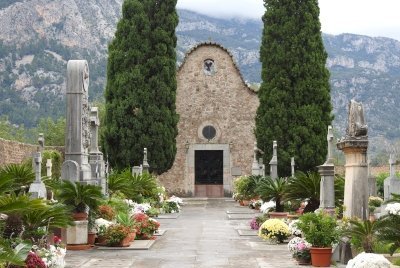
The Serra de Tramuntana is a beautiful landscape with steep mountainsides and lots of greenery. Like the rest of Mallorca, it is quite tourist trappy - so expect no lost paradise. An easy way to get to know the area is to take bus 203 from Palma. This is the ‘slow’ bus, that reaches the coastal town of Port de Soller after 1h20 min. It passes through the mountain villages of Valldemossa and Deia, and crosses large parts of the Serra de Tramuntana. These are narrow mountain roads, where two buses cannot pass each other. The stone villages seem glued to the steep mountain walls, that are so characteristic of this area. Near the coast, you can see dramatic cliffs.
The Serra is popular for hiking, even attracting long-distance hikers for a long weekend trip from Northern Europe. Since there are many daily flights from anywhere in Europe to Palma de Mallorca it is very accessible; from Palma it takes only 45 minutes by direct bus and then you are in the middle of this mountainous region. Crossing the mountain range on foot from west to east via the GR221 “Dry Stone Route” takes about 8 days with mountain huts available to spend the night.
I stayed for 2 nights in Soller, the liveliest place I encountered during my short week in Mallorca and Menorca in November. On my first day, I hiked a loop between Soller and Fortnalutx. Smaller towns like Fornalutx and Deia are included in …
Keep reading 0 comments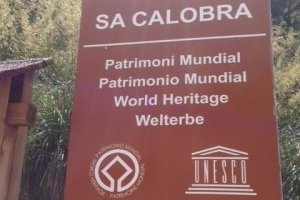
Even though Mallorca seems to be supercrowded at all times, especially when the cruiseships come in, the island came as a pleasant surprise to me. Palma is a very nice city (and the cathedral would probably be already a WH site if it were in any other country) and the mountains are exceptionally scenic, sometimes even spectacular. The Serra de Tramuntana range is the spine of the island (and protects the beaches from the northern winds) and reaches a height of over 1,400 metres. It includes several pretty towns and various monasteries, including the huge one at Lluc. Even though it is not really easy to find out where the core zone of the WHS starts and what is only in the buffer zone, you can be reasonably sure that any trip to the northern coast will make you traverse the core zone. The site is inscribed as a cultural landscape, and it is quite easy to make out various aspects of this as you make your way through the mountains, especially the historic stone walls separating the fields, some of which date back to Arab times. I did two trips to the mountains, both of them very much on the tourist trail and likely to be offered by various agencies - the half-day trip to Valldemossa to visit the Charterhouse (of Chopin and Sand fame) and the full-day trip to Sa Calobra (very winding roads and extraordinarily scenic), followed by a boat ride to Port de Sóller, a tram …
Keep reading 0 comments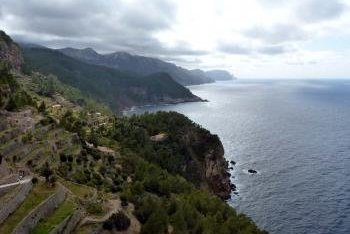
Mallorca’s “Sierra de Tramuntana” consists of a limestone range around 90kms long, 15kms wide and up to c1450m high, running along the north of the island. We found that it offers attractive scenery which, particularly along its coast, sometimes reaches the level of “spectacular”. Whilst some of its scenery is “wild” mountain and pine forest, much is also the result of human activity. However, its inscription as a WHS “Cultural Landscape”, seems to me to rate this latter aspect excessively highly and to illustrate a number of unfortunate directions which the “World Heritage” scheme has taken in recent years – A State Party determined to gain an inscription for every province and island. An Advisory Body (AB) which grinds very small on criticising detail but seems unwilling to stand up and be counted on the major calls as to whether a site really has “OUV”. And finally a WHC which operates on whim and politics and ignores its AB!
The Nomination File extends over 1300 pages. How much of this reflects the growing reaction by States Parties to being asked ever more detailed matters by the AB during the nomination process and how much is a symptom of a belief that the “thicker” the dossier is then the more “points” it must score, is not clear! But an immediate fact which strikes one is that large parts of it do not relate to the area proposed for inscription at all!! Much of it is about the very large areas allocated …
Keep reading 0 comments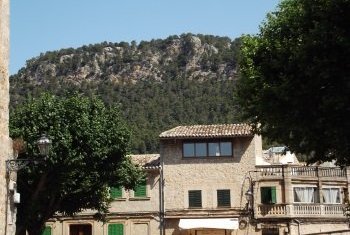
For a small island, Mallorca enjoys a variety of landscapes, and those of the rugged Serra de Tramuntana are quite spectacular. I visited the towns of Soller, Villahermosa and Polenca.
I reached Soller by various means. The antique wooden railway carriages of the old train were interesting, but much of the scenery was missed passingn through tunnels. Similarly with the direct bus, which traversed several tunnels. But the views from the bus via Villahermosa were amazing. And stopping off to walk the narrow streets of Villahermosa I was rewarded with other views of the Serra.
To reach Polenca I had to travel the full length of the Serra de Tramuntana. This town lies at the conluence of several mountain streams, all of them dry at the time.
Keep reading 0 comments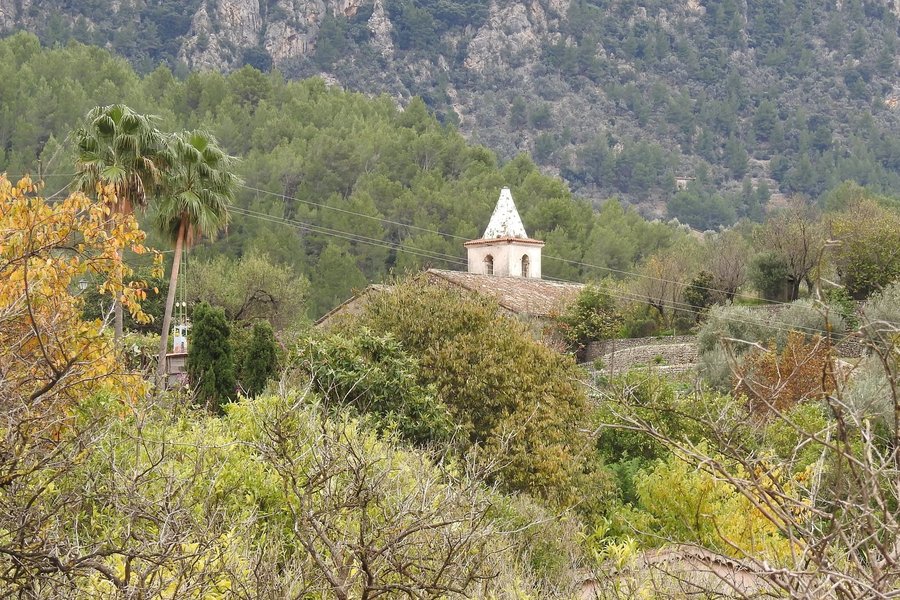
Albeit inscribed as a cultural site, the Serra de Tramuntana is mostly worth a visit because of its stunning landscape. The mountain range can be visited on an easy daytrip from Palma de Mallorca. We took the highway from Palma to the north and started in Pollença. From there, the Ma10 runs right through the Serra de Tramuntana, direction Palma. You will see plenty of terraces, dry stone walls and beautiful olive tree plantations. The real highlights are the small bays along the coastline. Don’t miss Sa Calobra, a scenic bay, only reached by a winding road, about 12km off the main route. Sóller, a small mountain town, is also a pleasant stop. I can recommend visiting the island during off-season. Car rental is ridiculously cheap (about EUR 8 per day) and you get a bargain on hotel prices. Temperature was still a nice 20 degrees in late November.
Keep reading 0 comments
